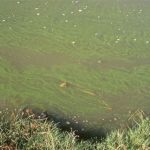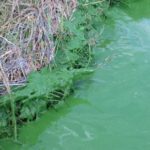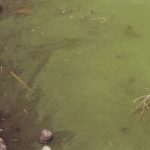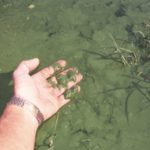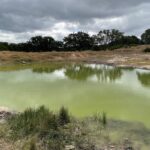Chlamydomonas, Chlorella, Euglena, Closterium, Anacystis spp., etc.
What is Planktonic Algae?
Physical Characteristics
- Floating microscope plants
- Literally millions of floating planktonic algae
- Color pond water shades of green, blue-green, brown or variations in between
Planktonic algae that color the water is often called a “bloom” or “algae bloom”. Many species of algae are involved in algae blooms and these species change over time based on temperature, light, nutrients, and other factors.
Pros and Cons of Planktonic Algae
Planktonic algae blooms are considered desirable as the beginning of the pond food chain. In fact, fertilization programs are often used to promote algae blooms to thereby support a larger fish population. Planktonic algae is desirable for shading the pond bottom (in areas over 2 feet deep). This shading suppresses the establishment of rooted aquatic plants. However, to much planktonic algae can cause oxygen depletions and fish kills (see Management Options).
